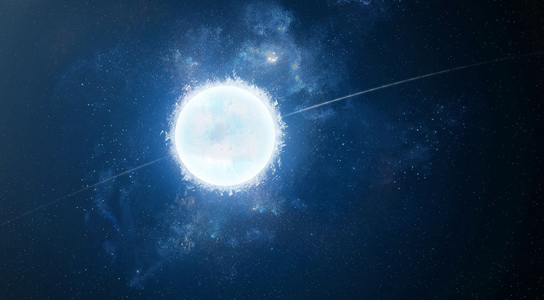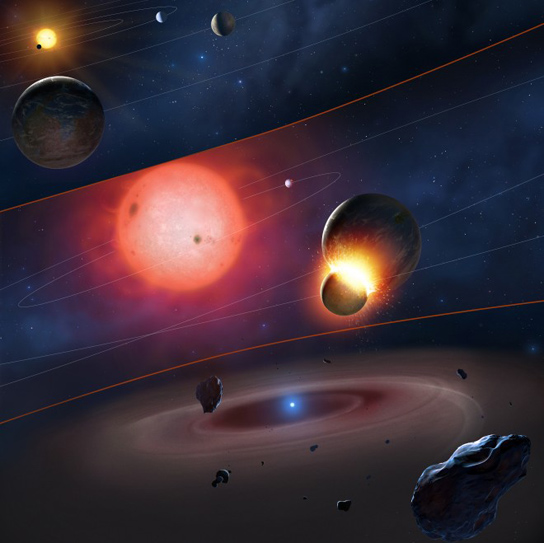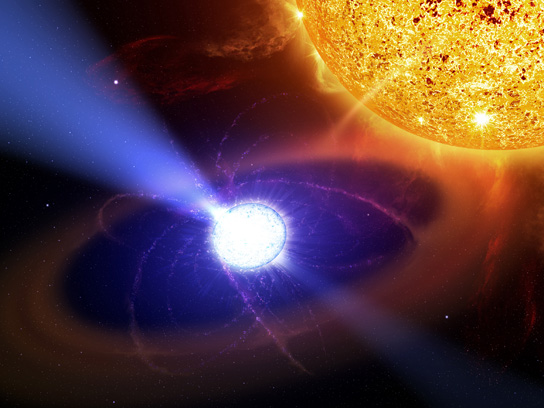Possible Death of Solar System Seen in White Dwarf Stars
May 7, 2012

Astronomers using the Hubble Space Telescope have been able to probe into the chemical signatures of dusky disks encircling four distant star systems. They discovered that surprisingly the chemical composition was eerily similar to Earth. Those elements make up 93% of the Earth’s mass.
White dwarf stars, several hundreds of light-years distant from Earth, could give an inkling of what will happen in the future to Earth. The findings were published on arXiv, and have been accepted for publication in the journal Monthly Notices of the Royal Astronomical Society.

Sol is about 4.57 billion years old and will survive another 5 billion years or so, unless something unpredictable happens in cosmological time scales. Once it runs low on hydrogen, the fusion would push away gas that usually gathers at its core. As the gas accumulates, the rising pressure will fuse helium atoms into carbon, increasing the star’s inner core temperature.

Once the final blaze pushes away the outer shell, it will become a red giant star. The surface will extend to the orbit of Earth. Sol will engulf Mercury and Venus, but it’s unclear whether the Earth will be swallowed up. Even if Earth survives, the surface will be roasted.
Later, the sun will become a planetary nebula. As its substance drifts away, it will lose mass and this will push planets out of their orbits.
The materials falling into the white dwarfs have allowed the team led by Boris Gänsicke, and astrophysicist at the University of Warwick, to analyze the dusty halo. The results suggest that any planets surviving the red giant phase will eventually crash into themselves, forming asteroid-like chunks.
The cloud near PG0843+516 revealed a large amount of nickel, iron, sulfur and other elements found in abundance in Earth’s core, implying that the accretion of such elements came from a terrestrial exoplanet.
No comments:
Post a Comment